ZJU researchers bring Monkey King’s “72 transformations” to life
Dancing robots, patrolling robotic dogs... As the year of 2025 dawns, the world is witnessing an impressive array of “robots” showcasing increasingly advanced technological capabilities. With groundbreaking progress in generative artificial intelligence, the tasks robots can perform have now exceeded the wildest imagination of science fiction. Humanoid robots, capable of handling complex tasks such as companionship, caregiving, and household chores, are now one step closer to becoming a part of everyday life in thousands of homes.
But have you ever wondered what a robot’s face truly looks like?
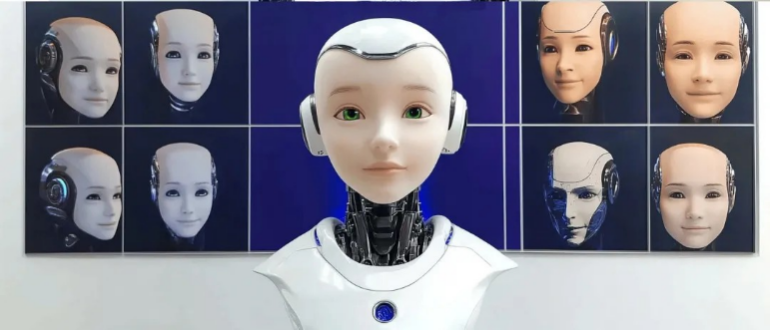
At the School of Mechanical Engineering, Zhejiang University, Professor ZOU Jun and his colleagues have developed a wearable mask that allows seamless transitions among a range of appearances, offering a fresh perspective on facial transformation for both humans and robots.
As China’s population continues to age and the demand for caregivers grows ever more urgent, the rise of humanoid robots for home use is becoming an unavoidable trend in the industrial landscape.
Professor ZOU Jun’s research group focuses on cutting-edge research in fluid-powered compliant drives. As research on humanoid robots deepens, the team has been committed to overcoming the hurdles that stand between advanced technology and practical application.
What sparks might emerge when the rigid world of robotics meets the soft flexibility of human-like movement?
“Facial expressions are a vital part of how we communicate our true emotions,” says ZOU Jun. “They play a pivotal role in conveying our inner thoughts.” This realization led the team to explore the development of “personalized” robots, designed to express emotions in a way that feels authentic to humans.
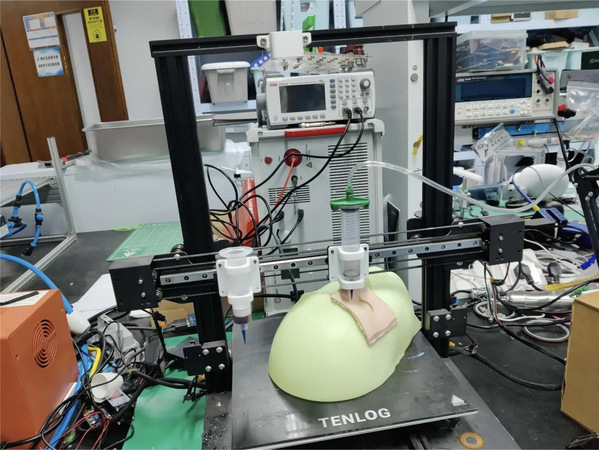
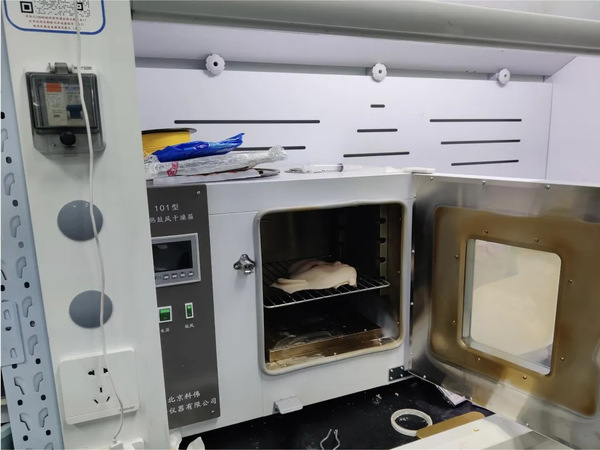
Manufacturing process of the flexible mask
After years of endeavor, the team introduced the “ZJ-Face” system in 2022, allowing humanoid robots to convey emotions like surprise, sadness, joy, and more through a range of facial movements, such as blinking, frowning, smiling, and opening their mouths.
As early as 2019, the team began pondering whether this technology could be adapted for human use. Much like the legendary Monkey King’s “72 transformations,” could technology allow us to change our faces at will?
“The initial challenge was making a mask that bore a close resemblance to a human face,” ZOU Jun recalls with a smile. In the early stages, the masks failed to be recognized by facial recognition systems. Researchers with a mechanical engineering background did not anticipate that making a mask that was both realistic and aesthetically pleasing would prove to be the first major hurdle.
“Going from 0 to 1 is always tough, but when you don’t know something, you simply learn it,” says ZOU Jun. With no roadmap to follow, the researchers tackled each challenge head-on. Whenever a task required knowledge beyond their expertise, they took it upon themselves to learn new skills, expanding their research horizons while also growing personally.
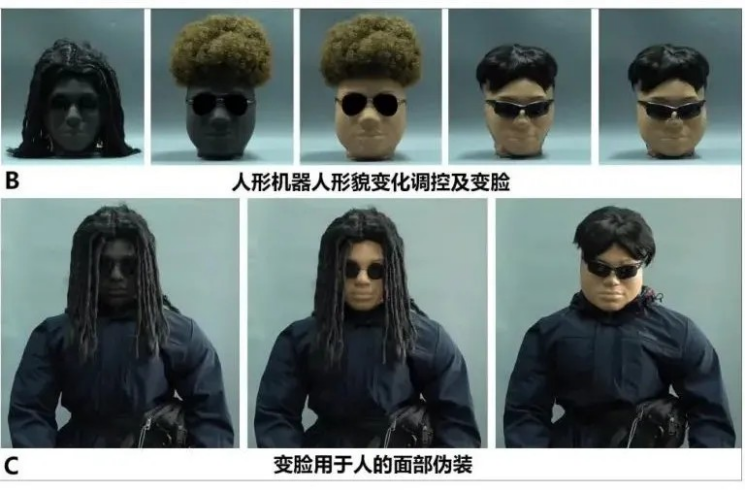
Flexible mask for facial expression control of humanoid robots and human facial camouflage
Starting in 2019, the team tirelessly tested every possible method over five years. Finally, with the seventh iteration, their wearable, face-changing mask began to take shape.
How does this small mask change its color and shape in such a short time?
Researcher TANG Wei explains that the latest version of the mask features two layers: one that changes color and the other that changes shape. All the control mechanisms are neatly packed into a device about the size of a fanny pack.
“We began by embedding different color-changing particles into the surface layer,” he says. By adjusting the temperature of the mask’s surface, they were able to achieve smooth transitions between various skin tones, from black to yellow.
The human face is composed of more than 40 flexible muscles, which allow for our unique and expressive features. To mimic these muscles, the researchers ingeniously embedded a series of cavities of different sizes beneath the color-changing layer. These cavities gently adhere to the face, and by manipulating the volume of gas within them, they can adjust the contours of the face.
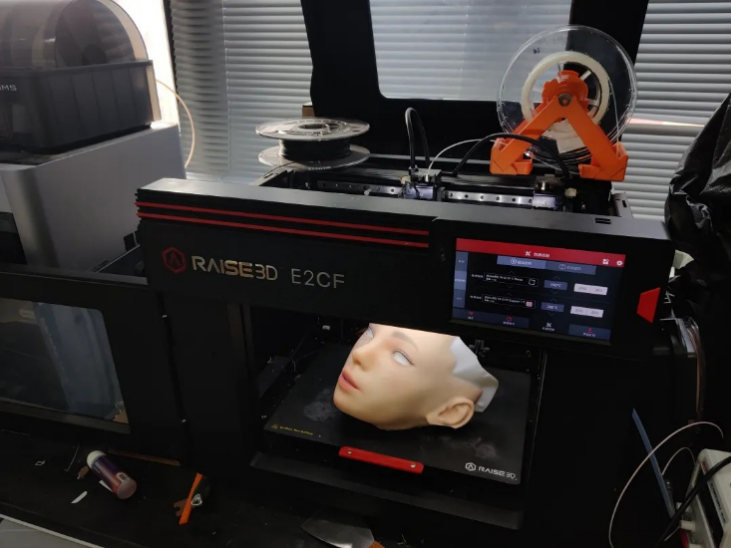
Mask effect diagram
In a bold move, the team developed a portable device driven by programmable chemical reactions. “When the temperature changes, the chemical reactions either produce or absorb gases, causing the facial muscles of the mask to shift freely,” explains TANG Wei. Thanks to this innovative approach, the face-changing process is not only quieter and safer but also fully programmable, allowing precise facial transformations with just a shift in temperature.
To make the mask more portable and wearable, the team meticulously considered factors such as size, weight, temperature, and thickness during the design process. “We’ve optimized the mask’s thickness to about one centimeter while keeping its internal temperature near room temperature, allowing for a lifelike simulation of the human face,” says TANG Wei. In the future, the team will continue pushing the boundaries, striving to make the mask even lighter, thinner, and more expressive.
The road to innovation has been long and demanding, yet the team remains undeterred.
Using open-source website information, they first conducted digital facial simulations online, ensuring their designs were both precise and aesthetically appealing before moving to physical production. After nearly ten iterations, they have now developed a mask capable of switching between at least eight different facial identities.
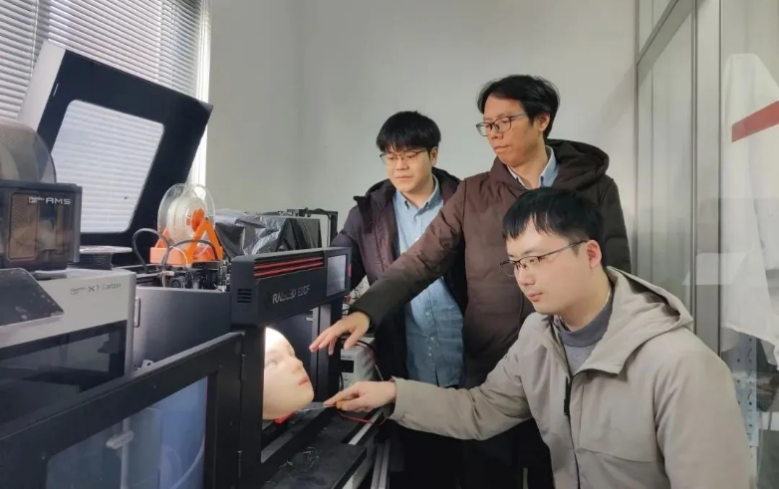
From left: Researcher TANG Wei, Professor ZOU Jun, and Dr. ZHONG Yiding
Now, they are taking their innovation a step further by integrating artificial intelligence and large model technology to craft humanoid robots with fully customizable features, from appearance and voice to skin texture and even age. Their goal? A future where face-changing masks achieve a “72 transformations” level of adaptability, echoing the legendary Monkey King.
What once seemed like science fiction is inching closer to reality. Humanoid robots are no longer just a distant dream but a tangible presence on the horizon. One day, these masks may even enable people to shift between different age appearances, offering the elderly the warmth of a familiar face — a companion that feels like family, enriching lives and deepening human connections.
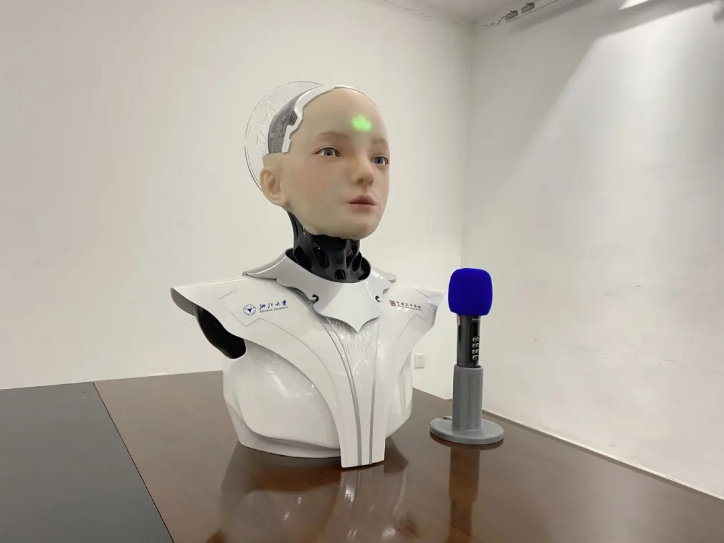
Interactive humanoid robot
“Our technology has already found its way into museums, turning them into grand classrooms,” says ZOU Jun. The latest “New White Lady” robot is set to make its debut at Hangzhou’s China Umbrella Museum, where for the first time, robotic guides will showcase rich facial expressions and interactive capabilities. Visitors will no longer just observe history; they will experience it, guided by a humanoid robot that brings cultural storytelling to life.
As the vast frontier of humanoid robotics unfolds, the team is committed to developing even more advanced materials to make masks lighter, thinner, and more responsive. With every breakthrough, they bring us closer to a world where technology seamlessly integrates with daily life, making intelligent humanoid robots a reality in homes everywhere.
Adapted and translated from the article by ZHA Meng, ZHANG Sunshuyi CHEN Huixia
Translator: FANG Fumin
Photo: The research team led by Prof. ZOU Jun
Editor: TIAN Minjie